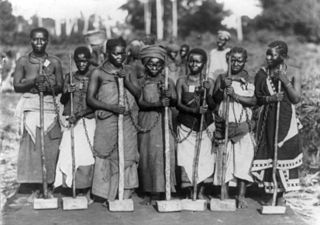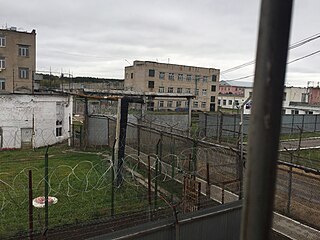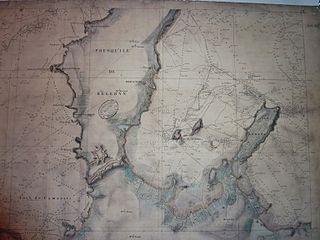 W
WPenal labour is a generic term for various kinds of forced labour which prisoners are required to perform, typically manual labour. The work may be light or hard, depending on the context. Forms of sentence involving penal labour have included involuntary servitude, penal servitude, and imprisonment with hard labour. The term may refer to several related scenarios: labour as a form of punishment, the prison system used as a means to secure labour, and labour as providing occupation for convicts. These scenarios can be applied to those imprisoned for political, religious, war, or other reasons as well as to criminal convicts.
 W
WA labor camp or work camp is a detention facility where inmates are forced to engage in penal labor as a form of punishment. Labor camps have many common aspects with slavery and with prisons. Conditions at labor camps vary widely depending on the operators. Convention no. 105 of the United Nations International Labour Organization (ILO), adopted internationally on 27 June 1957, abolished camps of forced labor.
 W
WA penal colony or exile colony is a settlement used to exile prisoners and separate them from the general population by placing them in a remote location, often an island or distant colonial territory. Although the term can be used to refer to a correctional facility located in a remote location it is more commonly used to refer to communities of prisoners overseen by wardens or governors having absolute authority.
 W
WA corrective colony is the most common type of prison in Russia and some post-Soviet states. Such colonies combine penal detention with compulsory work. The system of labor colonies originated in 1929 alongside the Gulag labor camps, and after 1953 the corrective penal colonies in the Soviet Union developed as a post-Stalin replacement of the Gulag labor-camp system.
 W
WThe crank machine was a penal labour device used in England in the 19th century. It consisted of a hand-turned crank which forced four large cups or ladles through sand inside a drum, doing nothing useful.
 W
WThe Danube–Black Sea Canal is a navigable canal in Romania, which runs from Cernavodă on the Danube river, via two branches, to Constanța and Năvodari on the Black Sea. Administrated from Agigea, it is an important part of the waterway link between the North Sea and the Black Sea via the Rhine–Main–Danube Canal. The main branch of the canal, with a length of 64.4 km (40.0 mi), which connects the Port of Cernavodă with the Port of Constanța, was built in 1976–1984, while the northern branch, known as the Poarta Albă–Midia Năvodari Canal, with a length of 31.2 km (19.4 mi), connecting Poarta Albă and the Port of Midia, was built between 1983 and 1987.
 W
WThe fort Quélern or réduit de Quélern is a castle and prison in the commune of Roscanvel in France.
 W
WThe Gorgona Agricultural Penal Colony is an Italian prison farm located on the island of Gorgona in the Tuscan Archipelago. The island has a long history of being home to monastic communities, with the Gorgona Abbey being a prominent establishment on the island for most of the Middle Ages. The abbey was abandoned in 1425, and in 1869 Gorgona became an agricultural penal colony for the Kingdom of Italy.
 W
WThe Gulag, GULAG, or GULag was the government agency in charge of the Soviet network of forced labor camps set up by order of Vladimir Lenin, reaching its peak during Joseph Stalin's rule from the 1930s to the early 1950s. English-language speakers also use the word gulag to refer to all forced-labor camps that existed in the Soviet Union, including camps that existed in the post-Lenin era.
 W
WHoheneck Women's Prison was a women's correctional facility in operation between 1862 and 2001 in Stollberg, Germany. It became most notable as a detention facility for female political prisoners in East Germany. The prison was designed to hold up to 600 inmates, however, as many as 1,600 were detained there.
 W
WThe Incarcerated Workers Organizing Committee (IWOC) is a prison-led section of the Industrial Workers of the World. Its purpose is 'a union for the incarcerated,' with the goal of abolishing prison slavery, as well as fighting to end the exploitation of working class people around the world.
 W
WThe Irish slaves myth is a pseudohistorical narrative that conflates the penal transportation and indentured servitude of Irish people during the 17th and 18th centuries, with the hereditary chattel slavery experienced by the forebears of the African diaspora. Some white nationalists, and others who want to minimize the effects of hereditary chattel slavery on Africans and their descendants, have used this false equivalence to deny racism against African Americans or claim that African Americans are too vocal in seeking justice for historical grievances. It also can hide the facts around Irish involvement in the transatlantic slave trade. The myth has been in circulation since at least the 1990s and has been disseminated in online memes and social media debates. In 2016, academics and Irish historians wrote to condemn the myth.
 W
WKatorga was a system of penal labor in the Russian Empire and the Soviet Union. Prisoners were sent to remote penal colonies in vast uninhabited areas of Siberia and Russian Far East where voluntary settlers and workers were never available in sufficient numbers. The prisoners had to perform forced labor under harsh conditions.
 W
WMilitary Units to Aid Production or UMAPs were agricultural concentration camps operated by the Cuban government from November 1965 to July 1968 in the province of Camagüey. The UMAP camps served as a form of forced labor for Cubans who could not serve in the military due to being conscientious objectors, Christians and other religious people, homosexuals, or political enemies of Fidel Castro or his communist revolution. The language used in the title can be misleading, as pointed out by historian Abel Sierra Madero, "The hybrid structure of work camps cum military units served to camouflage the true objectives of the recruitment effort and to distance the UMAPs from the legacy of forced labor." There is no official account of the internees of the UMAPs, but it has been estimated that the majority of those serving in them were conscientious objectors.
 W
WFélix-Albert Pel was a French criminal and serial killer. He was nicknamed The Watchmaker of Montreuil.
 W
WThe penal colony of New Caledonia was a penitentiary establishment which was in operation from 1864 to 1924. Many French prisoners from mainland France were deported there.
 W
WPenal transportation or transportation was the relocation of convicted criminals, or other persons regarded as undesirable, to a distant place, often a colony, for a specified term; later, specifically established penal colonies became their destination. While the prisoners may have been released once the sentences were served, they generally did not have the resources to return home.
 W
WA penal treadmill was a treadmill with steps set into two cast iron wheels. These drove a shaft that could be used to mill corn, pump water or connect to a large fan for resistance.
 W
WThe Periprava labor camp was a labor camp operated by the Romanian communist regime. The camp, located near the village of Periprava in the Danube Delta, held up to 2,000 prisoners. According to a study done by the International Centre for Studies into Communism, 8.23% of political prisoners in Communist Romania did time at Periprava. In the literature on communist prisons and camps in Romania, the Periprava labor camp is described as one of the harshest places of imprisonment. In view of the extremely severe detention and work regime, sheer terror, and high mortality, the camp is known among former detainees as a true "death camp".
 W
WA prison farm is a large correctional facility where penal labor convicts are forced to work on a farm, usually for manual labor, largely in open air, such as in agriculture, logging, quarrying, and mining. The concepts of prison farm and labor camp overlap. The historical equivalent on a very large scale was called a penal colony.
 W
WRoss Island Penal Colony was a convict settlement that was established in 1858 in the remote Andaman Islands by the British colonial government in India, primarily to jail a large number of prisoners from the Indian Rebellion of 1857, also known as the Indian Mutiny. With the establishment of the penal colony at Ross Island, the British administration made it the administrative headquarters for the entire group of Andaman and Nicobar Islands and built bungalows and other facilities on the site. This colony was meant as "manageable models of colonial governance and rehabilitation". The Chief Commissioner's residence was located at the highest point on the island. Over time, several other islands including Chatham and Viper were used for the penal colony.
 W
WA sweatshop or sweat factory is a crowded workplace with very poor, socially unacceptable or illegal working conditions. The work may be difficult, dangerous, climatically challenging or underpaid. Workers in sweatshops may work long hours with low pay, regardless of laws mandating overtime pay or a minimum wage; child labor laws may also be violated. The Fair Labor Association's "2006 Annual Public Report" inspected factories for FLA compliance in 18 countries including Bangladesh, El Salvador, Colombia, Guatemala, Malaysia, Thailand, Tunisia, Turkey, China, India, Vietnam, Honduras, Indonesia, Brazil, Mexico, and the US. The U.S. Department of Labor's "2015 Findings on the Worst Forms of Child Labor" found that "18 countries did not meet the International Labour Organization's recommendation for an adequate number of inspectors."